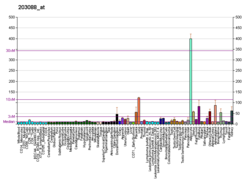| FBLN5 | |||||||||||||||||||||||||||||||||||||||||||||||||||
|---|---|---|---|---|---|---|---|---|---|---|---|---|---|---|---|---|---|---|---|---|---|---|---|---|---|---|---|---|---|---|---|---|---|---|---|---|---|---|---|---|---|---|---|---|---|---|---|---|---|---|---|
| Identifiers | |||||||||||||||||||||||||||||||||||||||||||||||||||
| Aliases | FBLN5 , ADCL2, ARCL1A, ARMD3, DANCE, EVEC, FIBL-5, UP50, HNARMD, fibulin 5, CMT1H | ||||||||||||||||||||||||||||||||||||||||||||||||||
| External IDs | OMIM: 604580; MGI: 1346091; HomoloGene: 38170; GeneCards: FBLN5; OMA:FBLN5 - orthologs | ||||||||||||||||||||||||||||||||||||||||||||||||||
| |||||||||||||||||||||||||||||||||||||||||||||||||||
| |||||||||||||||||||||||||||||||||||||||||||||||||||
| |||||||||||||||||||||||||||||||||||||||||||||||||||
| |||||||||||||||||||||||||||||||||||||||||||||||||||
| |||||||||||||||||||||||||||||||||||||||||||||||||||
| Wikidata | |||||||||||||||||||||||||||||||||||||||||||||||||||
| |||||||||||||||||||||||||||||||||||||||||||||||||||
Fibulin-5 (also known as DANCE (developmental arteries and neural crest epidermal growth factor (EGF)-like)) is a protein that in humans is encoded by the FBLN5 gene. [5] [6]




